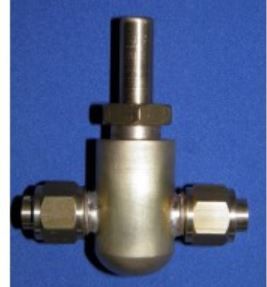Note that the link opens the details for the sort of valve common on plumbing systems, and these are very simple but highly restrictive to flow.
I sectioned one recovered from 15mm plumbing, to see if it's possible to make a miniature version, and found the port through the ball is half the pipe bore, so one-quarter cross-sectional area!
The operating spindle has a screwdriver-like tip that engages a shallow slot cut across the ball (verify the orientation before slotting).
The spindle is captive by a shoulder, so the valve is assembled by inserting the spindle from inside, then putting in the far O-ring seating, the ball itself turned to the slot engages, the near O-ring then a special circlip that locks into a groove in the valve wall.
A friend in the plumbing-trade vouched for the restriction they offer, but said full-flow versions are available.
It ought be possible to make full-flow versions for much smaller pipe sizes; though rather fiddly to machine. I'd use a manufactured bronze or stainless-steel ball, but I don't have a ball-turning attachment. Besides, it is likely to be of greater accuracy and sphericity than I'd hope to achieve!
To replace the circlip with something easier I'd be tempted to use a thin push-fitted sleeve trapped by the end-fitting or union, but beware the risk of losing the internal components when disconnecting the fitting.
Alternatively look on the boiler-fittings drawings for almost any miniature steam locomotive or traction-engine. The quarter-turn valves on these are usually plug-cocks, but you should find a design you can adapt to your needs.
Brian Abbott.





